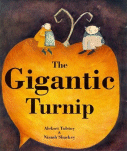 Skip through the Seasons
Skip through the Seasons
(formerly published as Jump into January) Written by: Stella Blackstone
Illustrated by: Maria Carluccio
Read Alone: Ages 4-9
Read Together: Ages 0-4
Paperback; Full-color illustrations; 32pp;
10.25 x 10 inchesThis is one of the many books that the author Stella Blackstone wrote. Among the many other best-selling books that Stella Blackstone wrote were My Granny Went to Market, Cleo the Cat series, Dragon on the Doorstep, I wish I were a Dinosaur, Secret Seahorse, Alligator Alphabet, An Island in the Sun, Bear series, Who are you? and Where’s the cat? Each of these books that Stella Blacktone wrote is distinctive of each other but the diversity of topics presented in each book is evident throughout. Her stories were translated in different languages. She lives in southwest England with her three children, two dogs and two cats.
For this book Skip through Seasons, it portrays about a journey around the year that includes objects and things and events that happen in each month. For most of each month of the year, there is also an action word that begins with the same letter as that month. For example:
Jump - for January
Fly - for February
Move - for May
Jive - for July
Slide -for September
Dance - for December
The other six months of the year that does not begin with an action word that begins with the same letter. However, these months still incorporates movements and actions that somehow relates to what is going on for these months. Examples are:
Whirl - for March
Splash -for April
Race - for June
Sail - for August
Twirl - for October
Sweep - for November
What I like about this book is at the bottom part of each page, it displays several words that are commonly used for each month. This is very useful when teachers and parents are introducing key words to children that are related to a festivities for the month. The words are supported by the pictures that are drawn for each page. There are many activities that you could use this book for including (let’s take for example you are introducing the month of December) :
1. asking where the picture of a candy cane,
2. asking which among the set of words is a ‘candy cane’,
3. naming 3 objects that they see on the page that are commonly used during the season,
4. naming the 12 months of the year,
5. the different seasons of the year, movements,
6. words that begin with the same letter as the name of the month and
7. rhyming words! (at the end of each phrase it says - come along with me! - and on the other page it ends with - what can you see? -)
The teachers can also laminate the words for a particular season for their word wall say summer -
For June - the words are (scooter, thermos, picnic blanket, basket, butterfly, swing, skateboard, bread, bicycle, bananas, cooler, picnic bench)
For July - the words are (juggler, dolls, bumper cars, ice cream stand, cotton candy, carousel, balloons, flags, ticket booth, ferris wheel, moon)
For August - the words are (sailboats, shovel, fisherman, crab, beach ball, sunglasses, pails, seagull, hammock, surfboard, sandcastles, flippers)
If I were still an early childhood teacher, this book would definitely be an all-year-round sight in my class’s library. They can build their vocabulary throughout the year with the pictures and the sight words that are included in each of the pages. What is also great is that, this book targets every topic that has to do with seasons even weather. This is worth having a multiple copies for yourself!
- Alpha














-08-06-2001%5Dbtownb1ds1lrg.jpg)





-01-02-2001%5Dgigturnipb2ds2.jpg)
-20-02-2003%5Dsafari_sp2_L.jpg)



-01-10-2002%5DAnimalBoogie_b2ds1_Lrge.jpg)






-01-02-2001%5Dgigturnipb1.gif)





